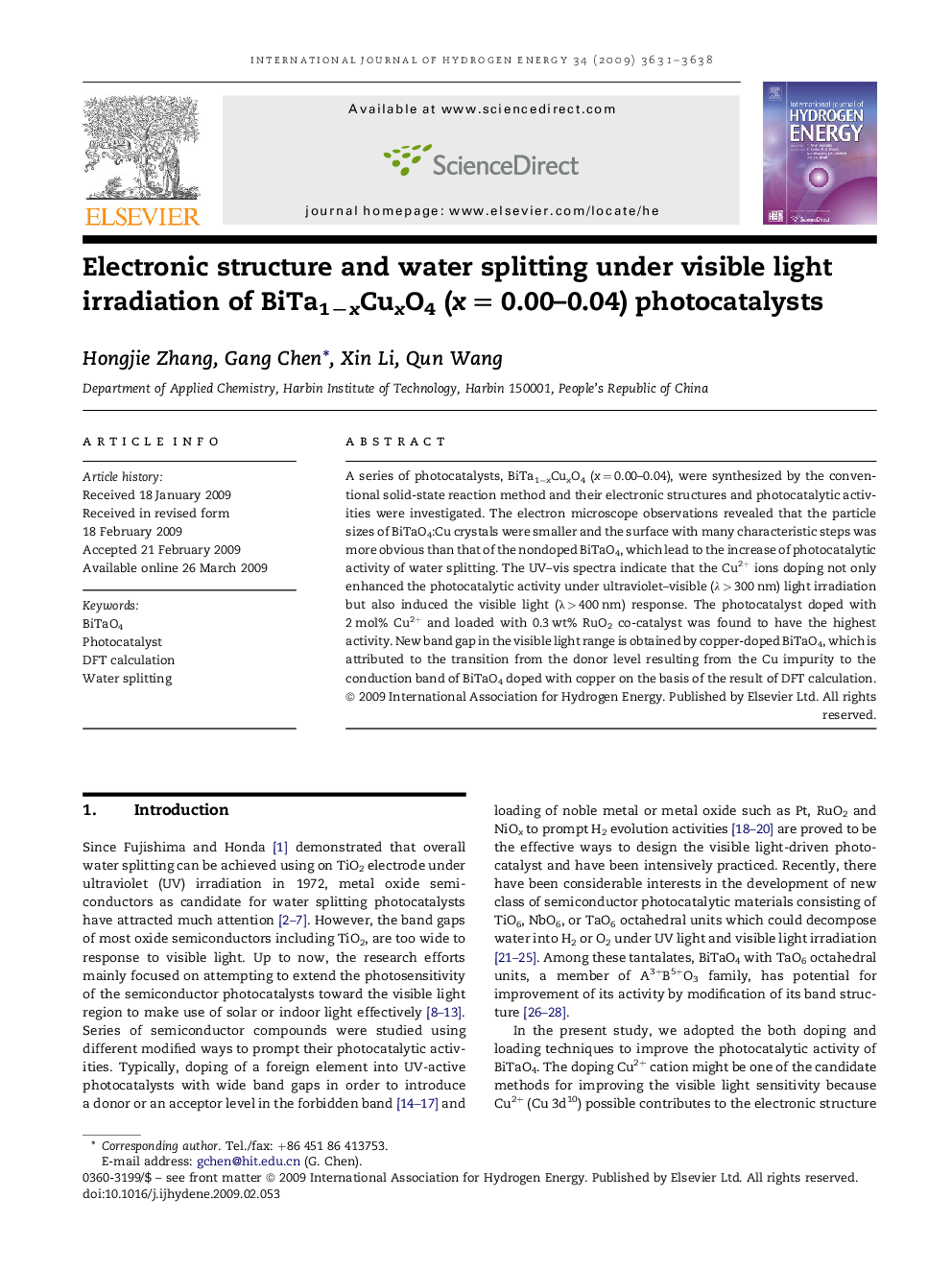| Article ID | Journal | Published Year | Pages | File Type |
|---|---|---|---|---|
| 1278992 | International Journal of Hydrogen Energy | 2009 | 8 Pages |
A series of photocatalysts, BiTa1−xCuxO4 (x = 0.00–0.04), were synthesized by the conventional solid-state reaction method and their electronic structures and photocatalytic activities were investigated. The electron microscope observations revealed that the particle sizes of BiTaO4:Cu crystals were smaller and the surface with many characteristic steps was more obvious than that of the nondoped BiTaO4, which lead to the increase of photocatalytic activity of water splitting. The UV–vis spectra indicate that the Cu2+ ions doping not only enhanced the photocatalytic activity under ultraviolet–visible (λ > 300 nm) light irradiation but also induced the visible light (λ > 400 nm) response. The photocatalyst doped with 2 mol% Cu2+ and loaded with 0.3 wt% RuO2 co-catalyst was found to have the highest activity. New band gap in the visible light range is obtained by copper-doped BiTaO4, which is attributed to the transition from the donor level resulting from the Cu impurity to the conduction band of BiTaO4 doped with copper on the basis of the result of DFT calculation.
